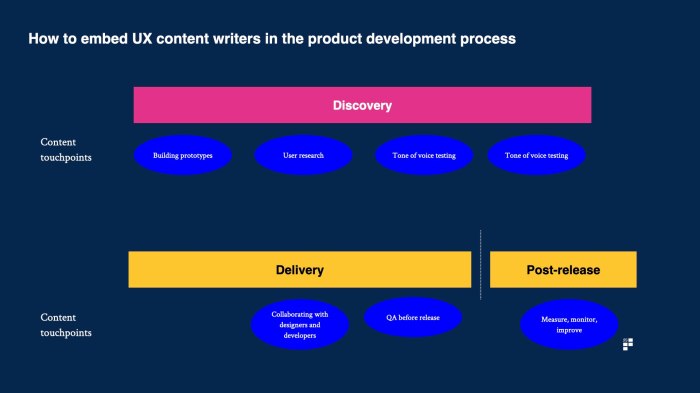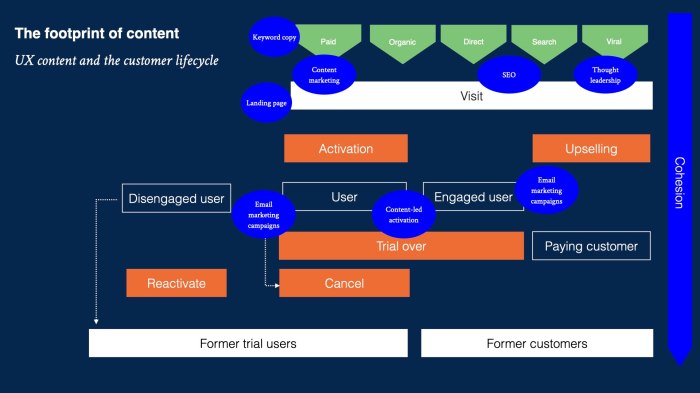Developing Product-Focused Content is key in today’s digital landscape, where businesses strive to stand out and connect with their audience on a deeper level. From captivating product descriptions to engaging tutorials, this journey delves into the power of content tailored specifically for products, promising a rollercoaster ride of insights and strategies that will keep you hooked until the very end.
As we explore the different facets of product-focused content creation, get ready to unlock the secrets behind successful content strategies and discover how to optimize your content to keep your audience coming back for more.
Importance of Developing Product-Focused Content
Creating content centered around products is crucial for businesses as it helps showcase the unique features and benefits of their offerings to potential customers. By highlighting specific products, businesses can effectively communicate their value proposition and differentiate themselves from competitors in a crowded marketplace.
Successful Product-Focused Content Strategies
- Apple’s product launch events, such as the unveiling of new iPhones or MacBooks, generate buzz and anticipation among consumers, driving sales and brand loyalty.
- Dove’s “Real Beauty” campaign focuses on its various beauty products while promoting a message of inclusivity and empowerment, resonating with customers on a deeper level.
- Tesla’s product-focused content includes detailed specifications and features of their electric vehicles, educating consumers and building trust in their innovative technology.
Enhancing Customer Engagement and Driving Sales
Product-focused content can enhance customer engagement by providing valuable information that helps consumers make informed purchasing decisions. By showcasing products in an engaging and visually appealing manner, businesses can capture the attention of their target audience and drive sales conversions. Additionally, interactive product demonstrations, user-generated content, and customer reviews can further solidify brand credibility and trust, leading to increased sales and customer retention.
Types of Product-Focused Content

When it comes to creating product-focused content, there are several types that serve different purposes in the customer journey. Each type plays a unique role in informing, engaging, and persuading potential customers. Here are some key types of product-focused content and how they can be effectively utilized:
Product Descriptions
Product descriptions are essential in providing detailed information about a product’s features, specifications, and benefits. They help customers understand what the product is and how it can meet their needs. To effectively utilize product descriptions, focus on highlighting key selling points, using clear and concise language, and incorporating relevant s for optimization.
Reviews
Reviews offer valuable insights from customers who have already purchased and used the product. They help build credibility and trust with potential buyers. To make the most of reviews, encourage satisfied customers to leave feedback, respond to both positive and negative reviews, and showcase testimonials on your website or marketing materials.
Tutorials
Tutorials provide step-by-step instructions on how to use a product effectively. They can help customers learn how to maximize the benefits of the product and troubleshoot any issues they may encounter. To create effective tutorials, use visuals like images or videos, break down complex processes into simple steps, and address common customer questions or concerns.
Comparison Guides
Comparison guides highlight the differences between your product and competitors’ products. They help customers make informed decisions by showcasing the unique features and advantages of your product. To create compelling comparison guides, focus on objective comparisons, highlight your product’s strengths, and address potential objections or concerns customers may have.
Best Practices for Developing Product-Focused Content

When creating product-focused content, it’s crucial to follow certain best practices to ensure that the content is engaging, informative, and ultimately drives conversions. Here are some key best practices to keep in mind:
Importance of Optimization
optimization plays a vital role in ensuring that your product-focused content is discoverable by your target audience. By incorporating relevant s, meta tags, and optimizing your content for search engines, you can increase visibility and attract more potential customers to your product pages.
- Research and identify relevant s related to your product.
- Optimize meta tags, headings, and URLs with targeted s.
- Create high-quality, informative content that provides value to your audience.
- Regularly update and refresh your content to maintain its relevance and improve rankings.
Ensuring Relevance and Value, Developing Product-Focused Content
To ensure that your product-focused content remains valuable and relevant to your target audience over time, consider the following strategies:
- Understand your target audience’s needs and preferences.
- Provide detailed product information, including features, benefits, and use cases.
- Incorporate customer reviews, testimonials, and case studies to build credibility.
- Monitor and analyze customer feedback and engagement metrics to refine your content strategy.
Tools and Resources for Developing Product-Focused Content
When it comes to creating and optimizing product-focused content, having the right tools and resources can make a huge difference in the success of your strategy. These tools can help you streamline your content creation process, analyze performance, and ultimately drive more traffic and conversions to your products.
Content Management Systems (CMS)
Content management systems play a crucial role in managing product-focused content effectively. Here are some popular CMS options ideal for handling product content:
- WordPress: Known for its user-friendly interface and extensive plugin options, WordPress is a versatile CMS that can be customized to meet your product content needs.
- Shopify: Specifically designed for e-commerce websites, Shopify offers a range of features tailored to showcasing and selling products online.
- Magento: A robust CMS tailored for larger e-commerce operations, Magento provides advanced customization options for managing extensive product catalogs.
Analytics Tools
Analytics tools are essential for measuring the effectiveness of your product-focused content strategies. By tracking key metrics, you can gain valuable insights into what resonates with your audience and how to optimize your content for better results. Some popular analytics tools include:
- Google Analytics: A powerful tool for tracking website traffic, user behavior, and conversions, Google Analytics provides detailed insights to help you refine your content strategy.
- Hotjar: Offering heatmaps, session recordings, and user surveys, Hotjar allows you to visualize how users interact with your product content and identify areas for improvement.
- Kissmetrics: Focused on customer engagement and retention, Kissmetrics helps you understand how users move through the sales funnel and which content drives conversions.
